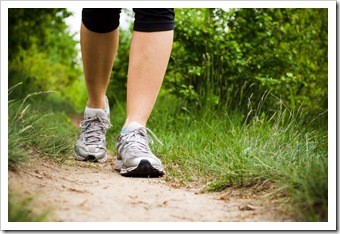
When you are ready to start a new exercise regimen there are always plenty of new-fangled machines to help you get started and to make your exercise easier. The strange machines, contraptions and weird exercise routines promise to make your exercise easier and with faster results. To the person that loves a new gadget or the sound of making exercise easier these tend to have great appeal, however, a quick look in their closet will tell you that the gadgets soon become an ornament for gathering dust. The thing you should first considered is simply getting back to basics in terms of your exercise. It doesn’t cost anything, you don’t need to go anywhere special to do it, and it’s really the best thing for those just getting started. What is it?
Walking. Plain old walking may sound a bit too basic but it’s been keeping people fit since growing legs became all the rage. That’s a long time ago.
What are the Benefits of Walking?
All you need to go walking is the will to do it, a little time, and a decent pair of shoes. There’s no excuse for a sedentary life when walking is one of the best forms of exercise. You can walk anywhere, and it provides the following benefits, and many more:
- Walking improves cardiovascular fitness
- Walking tones the muscles of the lower body
- Walking increases your metabolic rate to help burn more calories
- Walking reduces the risk of heart disease
- Walking has a lower risk of injury to your joints compared to jogging and running
How to Choose Your Walking Shoes?
You’re not on the catwalk when you go out walking, so don’t be swayed by the latest fashion. Simply choose a pair of shoes that will provide the best comfort and support.
- Make sure the shoes fit properly. Check that the ball of your foot rests where the front of the shoe bends with each stride.
- The soles should have plenty of cushioning to absorb the impact.
- Shop late in the day or following a workout when your feet have swelled to their largest, and wear the type of socks you will be walking in.
- Try to have a wander around the store in your chosen shoes for at least 10 minutes to make sure they feel right.
- Make the store detective following you even more suspicious by walking faster and faster.
The life of a walking shoe varies, depending on their usage – the weight of the person wearing them, for example, or the terrain tackled. As a rough guide, experts consider replacements should be considered at between 300 and 500 miles.
Getting Going
Before beginning any new exercise routine, always consult with your doctor. Assuming the all-clear, 12 minutes walking every other day is a reasonable target at first, and even that will confer health benefits. Your aim should be to increase to 30 minutes, five days a week. As the actual pace of walking will affect how much exercise is really taken, experts tend to agree that adults need to be taking 10,000 steps a day to be labeled “active”. A pedometer will tell you how you’re measuring up.
Tips to help you keep going:
- Let your arms move naturally and freely. If your right arm is swinging in synch with your right leg, something is very wrong.
- Don’t stoop, drop your head or look down as you’re walking as this accentuates your neck curve and throws your weight off.
- Walk without any leg weights or wrist weights and without holding dumbbells. Keep them as a separate exercise routine.
- Don’t be put off by a little soreness in the thighs and calves in the early days. Anything worse or more persistent, go and see your doctor of chiropractic.
- Keep up a good brisk pace as though you’re heading somewhere quite important. Too slow, and your cardiovascular system will not enjoy the full benefits.
Which Surface?
It’s likely that most people who walk recreationally will, for the sake of convenience, just leave their house and walk a few blocks before returning. Concrete isn’t the ideal walking surface, but it can be mitigated by a highly cushioned pair of shoes. A better option is to walk on grass for the extra give, although you have to watch for uneven spots and dips and irresponsible dog owners. The best choice would be the cushioned or rubberized tracks that recreation centers sometimes have, as these are both smooth and soft.
The Cause of Pain and Injury
Walking is a low-impact activity that’s unlikely to cause injury unless you walk into a lamppost. It’s therefore probable that any pain you do feel while out walking is being triggered by a pre-existing problem. It’s also likely that the root cause of the pain will not reside in the area where you are actually experiencing the pain. In other words, the injury is systemic rather than isolated or regional. Pain felt in the knee or the hips, for example, may be the result of a problem with the foot or ankle, and every step taken is throwing more imbalance up through the whole system. Unless rectified, this can continue until you may end up with pain in the back or elsewhere.
If such a situation does occur, with unexplained pain in places that don’t seem to make sense, a visit to your doctor of chiropractic is in order. Chiropractors are trained to track down and identify the source of your pain, then devise a treatment plan specifically geared to your personal circumstances.
For Your Health,
Dr. Scott Van Dam

